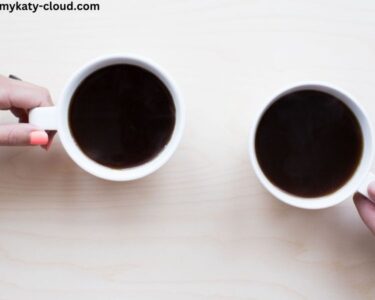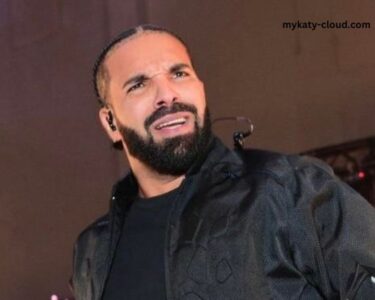Business casual is a dress code that falls somewhere between formal business attire and casual everyday wear. It’s a style that has become increasingly common in modern workplaces, offering a more relaxed yet still professional look. As a woman navigating the business world, understanding the nuances of business casual can be crucial for making a great impression and feeling confident in your appearance.
Business casual attire allows for more personal expression and comfort compared to traditional business formal wear, but it still requires a level of polish and professionalism. The key is to strike a balance between looking put-together and approachable. This can involve a thoughtful selection of clothing, accessories, and grooming choices that convey your competence and competence.
Key Components of a Business Casual Wardrobe
To build a versatile business casual wardrobe, consider the following essential pieces:
- Blouses and Tops: Opt for button-down shirts, structured blouses, or polished tops in fabrics like cotton, silk, or polyester. Avoid overly casual or revealing options.
- Slacks, Skirts, and Dresses: Tailored trousers, knee-length or midi-length skirts, and modest dresses in fabrics like wool, cotton, or linen work well for a business casual look.
- Blazers and Cardigans: A well-fitting blazer or a classic cardigan can instantly elevate an outfit, adding a touch of professionalism.
- Closed-Toe Shoes: Loafers, oxfords, pumps, or ballet flats are appropriate choices for business casual footwear. Avoid open-toe shoes, sandals, or overly casual footwear.
- Accessories: Scarves, belts, simple jewelry, and a professional-looking bag or tote can help pull your business casual ensemble together.
Examples of Business Casual Outfits for Women
Here are a few sample business casual outfits that you can consider:
- A navy blue blazer paired with a white button-down shirt, black ankle-length trousers, and loafers.
- A floral midi-length dress with a denim jacket and ballet flats.
- A gray pencil skirt, a silk blouse, and a cardigan, finished with pumps.
- Tailored khaki pants, a printed top, and a statement necklace with closed-toe heels.
- A knee-length A-line skirt, a tucked-in knit sweater, and oxford shoes.
Remember, the key is to choose pieces that are comfortable, well-fitting, and project a polished, professional image.
Tips for Accessorizing in a Business Casual Setting
Accessories can make or break a business casual look. Consider the following tips:
- Keep jewelry simple and understated, such as stud earrings, a delicate necklace, or a thin bracelet.
- Carry a structured, professional-looking bag or tote, rather than a casual shoulder bag or backpack.
- Experiment with scarves, belts, or a statement watch to add a touch of personal style.
- Avoid overly bold or distracting accessories that could be seen as unprofessional.
Business Casual Hairstyles for Women
Your hairstyle can also contribute to a polished business casual appearance. Some recommended options include:
- Sleek, straight styles or soft waves
- Neatly pulled-back looks, such as a low bun or a ponytail
- Subtle, natural-looking highlights or lowlights
- Minimal, natural-looking makeup
The key is to maintain a groomed, put-together look that doesn’t draw too much attention away from your professionalism.
Business Casual Shoes for Women
Choosing the right footwear is essential for a successful business casual ensemble. Some appropriate options include:
- Closed-toe pumps or loafers
- Ballet flats or low-heeled oxfords
- Leather or suede ankle boots
- Pointed-toe flats
Avoid overly casual or athletic-looking shoes, as well as anything with very high heels or platforms.
Business Casual for Different Industries
The specific interpretation of business casual can vary depending on the industry and company culture. For example, in a creative field, the dress code may be more relaxed, allowing for more personal expression. In a more traditional corporate setting, the business casual guidelines may be more structured.
When starting a new job or navigating a different work environment, it’s always a good idea to observe the dress code of your colleagues and ask for guidance from your HR department or supervisor. This will help you understand the expected level of formality and adjust your wardrobe accordingly.
Business Casual vs. Formal Attire: Understanding the Difference
While business casual and business formal attire share some similarities, there are distinct differences between the two:
| Business Casual | Business Formal |
|---|---|
| More relaxed and comfortable | More structured and professional |
| Allows for personal expression | Requires strict adherence to dress code |
| Includes items like khakis, blouses, and loafers | Typically includes suits, button-down shirts, and dress shoes |
| Offers flexibility in fabric, color, and patterns | Emphasizes conservative, neutral colors and classic silhouettes |
Knowing the difference between these two dress codes can help you make informed choices about what to wear in various professional settings.
Dressing for Success: How Business Casual Affects Professionalism
Your choice of business casual attire can have a significant impact on how you are perceived in the workplace. A well-executed business casual look can convey competence, confidence, and a commitment to professionalism. Conversely, an ill-fitting or sloppy business casual ensemble can undermine your credibility and make it more challenging to be taken seriously.
By investing in quality, well-fitting pieces and maintaining a polished, put-together appearance, you can use business casual as a tool to enhance your professional image and demonstrate your value to your colleagues and superiors.
Conclusion
Navigating the world of business casual as a woman can be a nuanced and ever-evolving journey. By understanding the key components of a business casual wardrobe, mastering the art of accessorizing, and adapting your style to different work environments, you can develop a professional look that reflects your unique personality and competence.
Remember, the goal of business casual is to strike a balance between comfort and professionalism. With a little practice and a keen eye for detail, you can confidently embrace the business casual dress code and use it to your advantage in the workplace.
To learn more about building a versatile and professional business casual wardrobe, consider checking out our collection of high-quality, stylish women’s workwear. Our team of fashion experts can help you curate the perfect mix of pieces to elevate your office attire and boost your confidence on the job.




